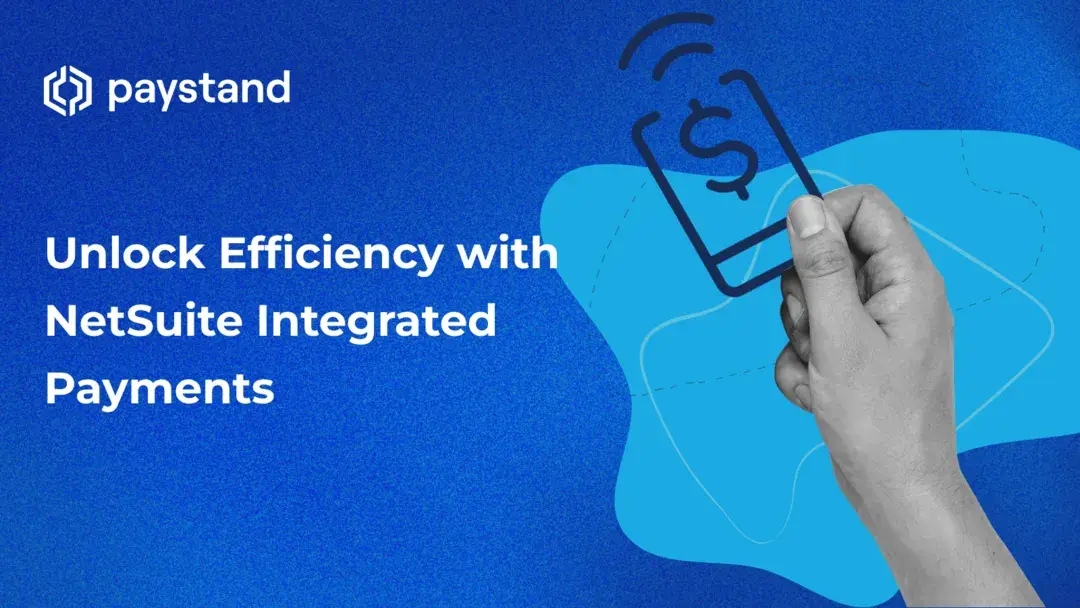Unlock Efficiency with NetSuite Integrated Payments

NetSuite integrated payments are crucial for efficient processing within NetSuite. They empower businesses to streamline transactions, enhance customer satisfaction, and optimize financial operations. These gateways are essential to driving operational efficiency and accelerating cash flow.
With more than 31,000 customers worldwide, NetSuite is one of the most popular ERPs for finance teams looking to streamline their accounting processes. It offers an array of features and integrations to improve billing and payments.
To leverage the full potential of integrated payment solutions with NetSuite, businesses can explore comprehensive integration options and select providers that align with their specific requirements and objectives. Keep reading to learn how.
What is an Integrated Payment Gateway?
An integrated payment gateway is the digital bridge between a business's ERP system, such as NetSuite, and various payment channels. It streamlines accepting payments by initiating, processing, and recording transactions directly within the ERP interface. This integration eliminates the need for manual payment data entry and facilitates a seamless flow of information between the ERP and payment processing systems.
Integrated payment gateways offer a wide range of functionalities, including:
- Multiple payment methods. Businesses can accept payments via credit cards, debit cards, ACH transfers, eChecks, and bank-to-bank transfers, allowing customers to settle their invoices.
- Automated Invoicing. The gateway automates the generation and distribution of invoices, reducing the need for manual intervention and minimizing billing errors.
- Fee Management. Businesses can manage transaction fees associated with different payment methods, optimizing processing cost efficiency and promoting preferred payment options.
- Real-Time Payment Processing. Transactions are processed in real-time, ensuring prompt confirmation and faster access to funds.
- Seamless Reconciliation. The gateway automatically reconciles payments with corresponding invoices in the ERP system, streamlining the reconciliation process and enhancing accuracy in financial records.
What does a NetSuite integration for AR look like?
If you want to optimize your NetSuite operations, integration with AR automation is the fastest way to success.
These third-party integrations are critical for adding more functionality to your ERP and quickly scaling your processes.
Integrations for AR come in many forms. The best ones merge so completely with your NetSuite account that you don’t need a second website login and dashboard to send payments. In other words, you should be able to automate your AR processes or send individual invoices from the NetSuite program.
What Banks Integrate with NetSuite?
NetSuite integrated payment solutions typically support connectivity with a wide array of banks and financial institutions, ensuring compatibility with the banking infrastructure utilized by businesses. Some notable features of banks that integrate with NetSuite include:
- Real-time fund transfers. NetSuite bank integrations facilitate real-time fund transfers between business and external accounts.
- Automated payment settlements. Payments received through the integration are automatically settled, reducing manual effort and expediting the cash flow cycle.
- Comprehensive coverage. NetSuite’s integration covers a significant portion of the banking market, providing businesses access to various financial institutions for their payment processing needs.
What Payroll Systems Integrate with NetSuite?
Businesses leveraging NetSuite for ERP functionalities can integrate with various systems to streamline payroll processing. Some payroll systems compatible with NetSuite include:
- ADP offers NetSuite integration capabilities, allowing businesses to seamlessly synchronize employee data, payroll information, and financial records.
- Paychex integrates with NetSuite to facilitate payroll data exchange, ensuring accuracy in employee compensation and compliance with regulatory requirements.
NetSuite Payment Processing Options
Integrated payment solutions for NetSuite offer diverse options to accommodate customers' and vendors' payment preferences. These options include:
- Credit and debit cards. Businesses can accept credit card payments (e.g., Visa, Mastercard, American Express), providing customers with payment convenience.
- ACH transfers. They offer a secure and cost-effective payment method for businesses and customers.
- eChecks. They allow businesses to process payments using customers' bank account information, reducing reliance on paper-based checks.
- Bank-to-bank transfers. NetSuite integrations facilitate direct bank-to-bank transfers, enabling efficient fund transfers between business and external bank accounts.
Integrated payment gateways are vital in enhancing payment processing efficiency within NetSuite, empowering businesses to streamline transactions, improve customer satisfaction, and optimize financial operations. By seamlessly integrating with NetSuite, these gateways facilitate real-time fund transfers, automate invoicing, and offer diverse payment options to meet the evolving needs of businesses and their customers.
As businesses strive to navigate the complexities of payment processing and financial management, selecting the right payment solution provider becomes crucial. NetSuite remains popular for finance teams seeking to streamline accounting processes and enhance billing efficiency. However, automated invoicing alone cannot guarantee timely payments in today's dynamic business landscape.
To learn more about leveraging the full potential of integrated payment solutions with NetSuite, explore comprehensive integration options, and discover how Paystand can revolutionize your payment processing experience, click here.







